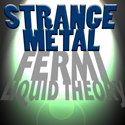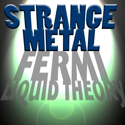Hidden simplicity
After more than twenty years of intense research on high-temperature cuprate superconductors, volumes of data have been amassed detailing the behavior of these fascinating materials. Versatile shapeshifters, the cuprates change from an insulator, to a superconductor, to a “strange” metal (that is, a metal that can’t be described as a Fermi liquid), all within a relatively narrow range of temperatures and carrier doping. The comprehensive description of this clash of different phases of matter is a formidable task at the heart of modern condensed-matter physics. In particular, no theory has managed to consistently describe the properties of the strange metal within one framework.
Now, in a paper appearing in Physical Review Letters, Philip Casey and Philip Anderson of Princeton University generalize the hidden Fermi-liquid theory, which they developed in their earlier work, to provide a self-consistent description of the strange metal state. Their theory offers a natural explanation of a variety of spectroscopic and transport experiments on cuprates.
Casey and Anderson’s idea is based on the ansatz that the strange metal phase of the cuprates is described by an ordinary, well-understood Fermi-liquid theory that exists, but which is hidden in an unphysical Hilbert space (an analog of a Platonic world). In this picture, projecting the familiar Fermi liquid back into the physical world (i.e., making a measurement) converts the Fermi liquid into the experimentally observed strangeness. If Casey and Anderson’s theory withstands further experimental scrutiny, it will surely be a leap forward in our understanding of the cuprates. – Alex Klironomos





